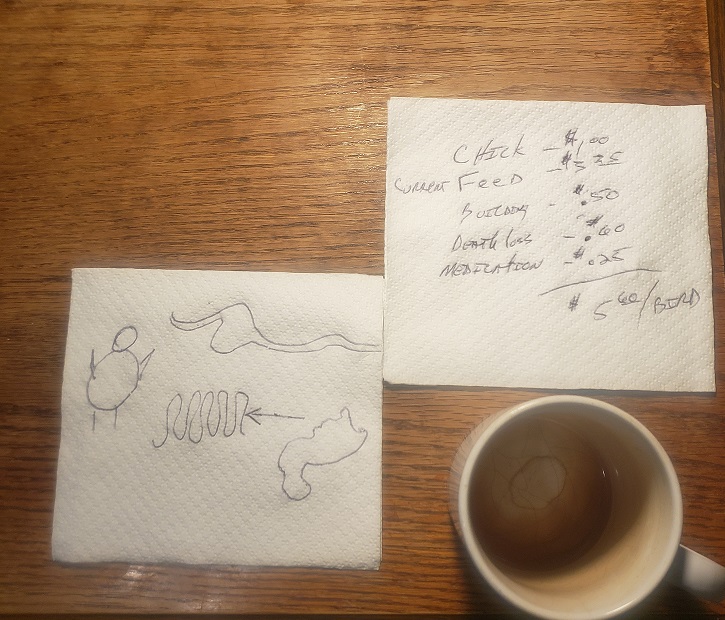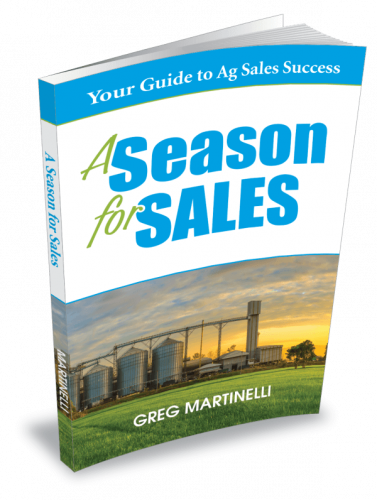Sell to be understood, not to impress
Our waiter ushered us over to our table as we sat down in the small local diner. My potential customer, Mark, knew the place well and most of the patrons in the diner. After he got done saying hello to literally everyone in the diner, we made some initial small talk, and I started in on my planned questions around Mark’s operation. He owned a large poultry operation, which raised their birds inside buildings and finished them in outside pens.
My primary product advantage to sell him was a microbial product which was not only invisible, but difficult to determine effectiveness. Feeding an animal raised outdoors, at various health and growth stages makes it difficult to determine the different effectiveness levels of micro-nutrients. Was it the product? Was it the weather? Was it better calves or chicks in one pen versus the other? Often, explaining it to a potential customer became confusing and complicated.
“So, how does this stuff work?” Mark asked me. At this point, I was ready to pull out my thirty PowerPoint slides with videos included. They really did a great job of explaining how the product worked. One small problem. A dead battery and we were not near an outlet. Another small problem. Our table was now covered in coffee cups, water glasses and food plates. A laptop would not have been very convenient to set up or work from anyway. Like many customers, Mark found it amusing that a computer problem was going to get him a free lunch and no sales presentation. Little did he know, I had a backup plan.
Taking a page from my manager’s selling book, I grabbed a clean napkin and pen. Drawing out in rough pictures what happens with this particular product, Mark started to get involved in the drawing. After laughing a bit at my computer issues and then my terrible art skills, Mark would grab the pen at times and help improve the drawing. This was especially true when I didn’t draw his birds as perfect as he would have liked.
As lunch time wound down, we got into the discussion on cost and return on my products. Seeing how much fun he had with the bird drawings, I handed him the pen. “How would you figure up what it would take to return the cost of this product,” I asked him. Thinking he would certainly not take the pen nor have a method for determining it, Mark surprised me. He grabbed the pen and wrote out a fairly sound way that he figures up ROI on dollars spent. With a few questions on my part to understand better, we had an accurate method to determine the ROI. The most important part was that it was his method.
As we stood up to leave, we shook hands and then Mark did one thing that inspired this article. He reached down and picked up the two napkins we had sketched on. Folding them, he put them in the folder I had prepared for the meeting.
Happy with myself for surviving a computer issue, the real lesson came later that year. After Mark had tried my product on a pen of birds, we met in his office. From inside his desk drawer, he pulled out my folder from that original lunch meeting. Inside the folder, Mark removed those two napkins. Amazed that he kept them and didn’t blow his nose with them, he mentioned the numbers had come out just as we discussed at the diner.
“Sorry for such an unprofessional start to our relationship, but I really wanted to work with you. I knew you’d like our products if you gave them a try. It took us 3 months just to get you to lunch and I really didn’t want to mess up the opportunity because of a bad battery.” I explained.
Mark asserted. “Trust me. It helped you. I enjoyed that as much as any presentation.”
From that day forward, I made sure to incorporate a “rough” drawing in most of my presentations, especially when in a diner setting, which was often. Please don’t misunderstand. I use PowerPoint presentations if available. They look professional and include excellent marketing material. However, I also know that it’s only good to a point. Many PowerPoint presentations are not specific enough to this customer’s situation.
That’s when you can flip over a clean napkin. A place mat is even better. Flip the place mat over as the top usually has a lot of advertisements or the menu. Jump right in before the table gets cluttered with coffee and water cups. Move your plate and silverware out of the way.
Some tips:
-
- Start big picture: Draw the overall scope of the product, program, system or operation. Then get down into the weeds and the nitty gritty detail pictures. This scope will help your customer understand easier.
- Don’t worry about artistic quality. This is meat and potatoes art work if there is such a thing. As was the case with Mark, my poor drawing skills actually became comical at times. This brings me to the most important point.
- Get the pen in your customer’s hands whenever you can. Let them draw, correct, edit, modify, etc. The more they put into it, the more ownership they have in the presentation.
- Offer the drawing to your customer. Joking or not, offer the drawing to your customer. How many salespeople come along with a presentation and a glossy finished brochure? Most, if not all of them. How many salespeople open up an impromptu art class at the local diner on the back of a napkin or place mat? Just you. So, offer it to them. It’s highly likely they will throw it away or let it get lost in the pile of papers on their shop table. Yet, on a table full of brochures, your sketch will stand out and be remembered; especially since they helped draw it.
There’s an old saying that “A picture is worth a thousand words”.
Let’s create a new saying today, “A picture is worth a thousand words but a napkin drawing you and your customer co-create is worth a million.”
Not as catchy, but very true!
_______________________________________________________________________________________
Go from being a Good Salesperson to a Trusted Advisor
This virtual training course takes you through the process of becoming that trusted advisor to your customers.
Establishing yourself as the Go-To Salesperson to buy from. Learn how to build your brand in the market to reduce objections.
“I bring everything I have to this course to show you a clear path on how to overcome the most common problems salespeople have in agribusiness. Along with my 30 years of selling and leading sales people, I pull from thousands who have gone through my training programs in the last five years.”
Click on the links above to watch the free webinar and enroll in the course to go from a good salesperson to a trusted advisor
_______________________________________________________________________________________





